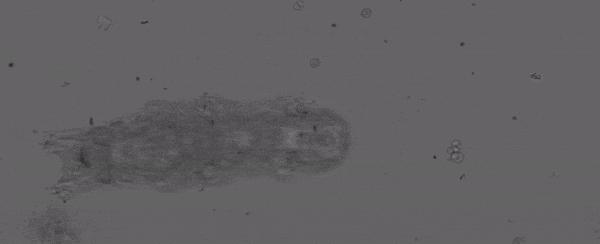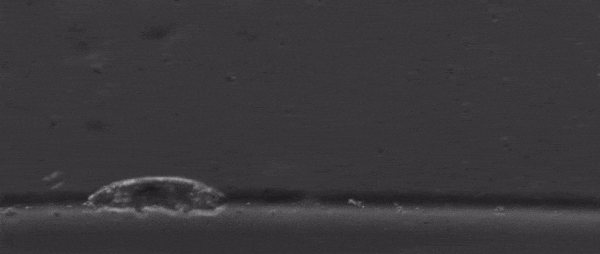Tardigrades are undoubtedly weird. Dehydrate them into glass, then fire them out of a gun, and once you rehydrate them you can still have a living creature. Their outsides aren't the only thing that's tough either, with scientists finding last year that they also have special DNA armor proteins.
But if we take a step back from their immense capacity for being beaten up, there are many other mysterious things about them. For starters, how do these tiny creatures walk?
After all, they're one of the only animals with soft little bodies like this that can walk, plus they're one of the smallest animals with legs that we know of.
 Tardigrade walking on a soft gel. (Nirody et al., PNAS, 2021)
Tardigrade walking on a soft gel. (Nirody et al., PNAS, 2021)
"One of the coolest – and initially most surprising – things about tardigrades walking to me was how… good they were at it," Rockefeller University mechanical biologist Jasmine Nirody wrote on Twitter.
"They have a regular gait, and it looks remarkably like those of much, much larger animals!"
So, Nirody and colleagues recorded walking tardigrades of the Hypsibius dujardini species to analyze their gait and leg coordination, and we get to enjoy the results.
 A tardigrade walking on a stiffer gel. (Lisset Duran)
A tardigrade walking on a stiffer gel. (Lisset Duran)
"We didn't force them to do anything. Sometimes they would be really chill and just want to stroll around the substrate," says Nirody. "Other times, they'd see something they like and run towards it."
The team took tardigrades and walked them across different surfaces, finding that their stepping pattern is very similar to insects – despite the two groups being incredibly different sizes and made of completely different stuff.
 Tardigrade walking on a stiff gel with claws visible. (Nirody et al., PNAS, 2021)
Tardigrade walking on a stiff gel with claws visible. (Nirody et al., PNAS, 2021)
The team also recorded the little guys trying to walk on smooth glass (they didn't get very far on the smooth surface), and on gels with two different levels of stiffness, to work out how that changed their walk in the different conditions.
 An assumedly unhappy tardigrade on glass. (Nirody et al., PNAS, 2021)
An assumedly unhappy tardigrade on glass. (Nirody et al., PNAS, 2021)
"We find that tardigrades adapt their locomotion to a 'galloping' coordination pattern when walking on softer substrates," the team writes in a new paper.
"This strategy has also been observed in arthropods to move efficiently on flowing or granular substrates."
Why tardigrades walk so much like insects is still an open question. The researchers aren't sure if there could be a potential common ancestor with insects, or whether the walking trait evolved separately in both organisms.
The research has been published in PNAS.
